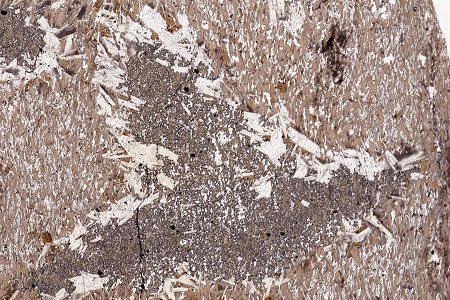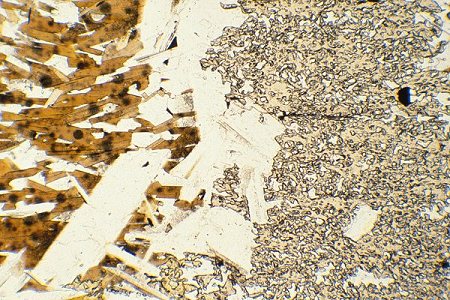
This example, in contrast to the andalusite-sillimanite problem, seems perfectly obvious. A large porphyroblast of staurolite is being replaced around its margins by random muscovite flakes. What are the particular features that make this obvious?
First, there is a distinctive shape. The outline is that of a twinned staurolite crystal. It is not a natural shape for a pre-existing aggregate of muscovite grains. We recognise it as a partial pseudomorph after staurolite. Even if all the staurolite had gone we might still recognise the shape.

Second, there is a pattern to the quartz inclusions in the staurolite (one that looks like an early matrix fabric that the poikiloblast overgrew), which the replacement by muscovite has not preserved. It would be highly improbable that staurolite could acquire such a pattern if it grew from muscovite that contained no inclusions.

Plane-polarized light : Crossed polars
So, it looks like the strongest criteria for determining growth sequences are founded on pseudomorphing and inclusion patterns.
Created on ... October 4, 2003